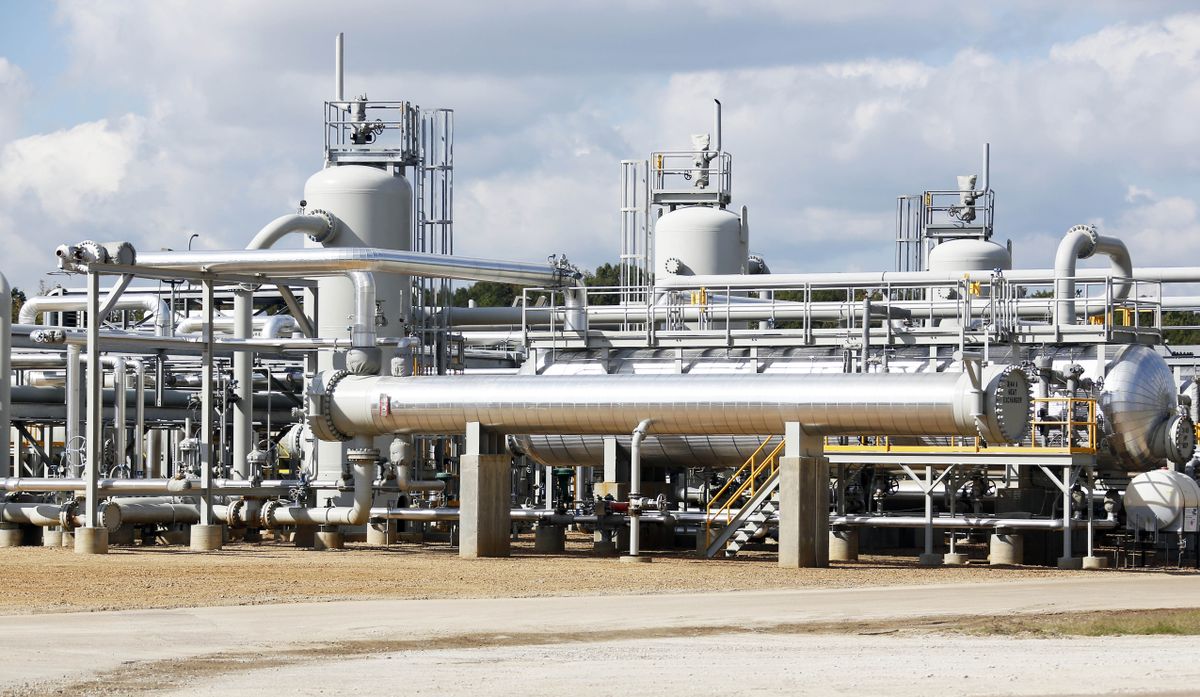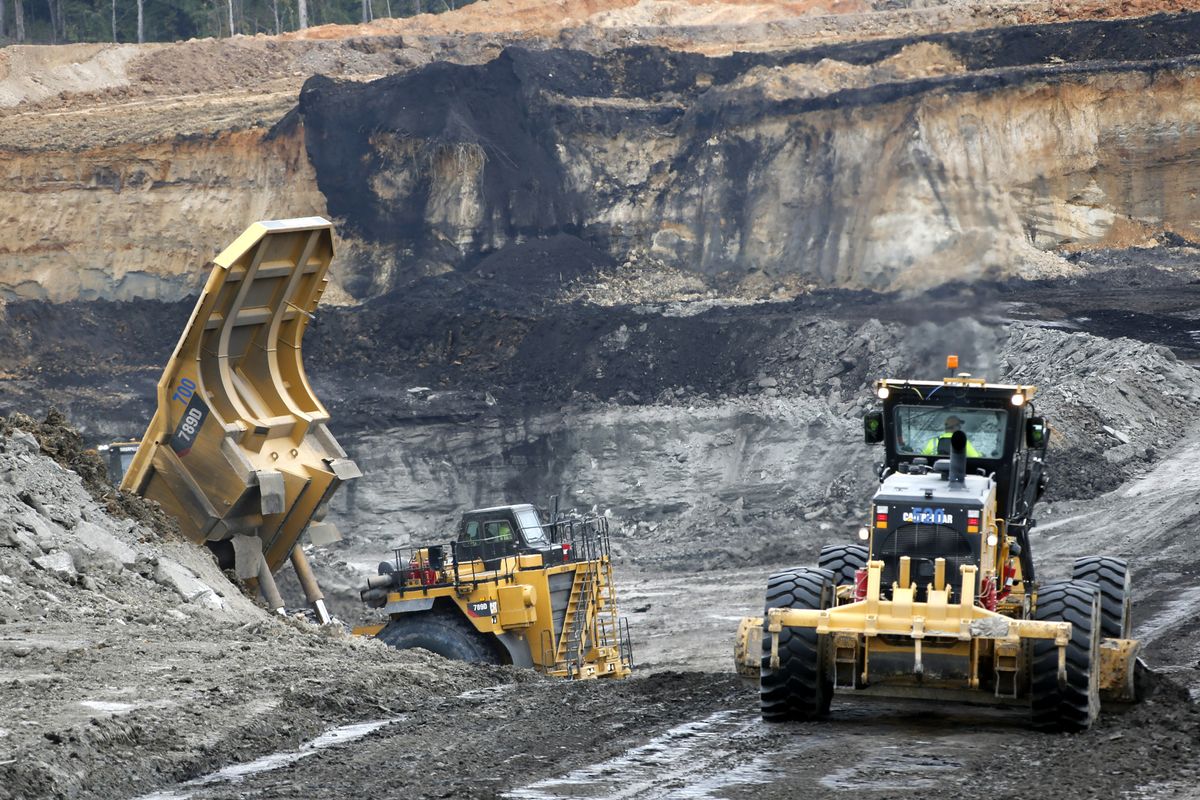CO2 waste from coal plants helps extract more oil from old fields
Work continues at Denbury Resources Inc.’s Tinsley Facility in Tinsley, Miss. Denbury Resources hopes to bring new life to old oil fields by pumping in carbon dioxide from coal-fired power plants to force additional oil to the surface. (Associated Press)
DE KALB, Miss. – America’s newest, most expensive coal-fired power plant is hailed as one of the cleanest on the planet, thanks to government-backed technology that removes carbon dioxide and keeps it out of the atmosphere.
But once the carbon is stripped away, it will be used to do something that is not so green at all.
It will extract oil.
When President Barack Obama first endorsed this “carbon capture” technology, the idea was that it would fight global warming by sparing the atmosphere from more greenhouse gases. It makes coal plants cleaner by burying deep underground the carbon dioxide that typically is pumped out of smokestacks.
But that green vision proved too expensive and complicated. So the administration accepted a trade-off.
To help the environment, the government allows power companies to sell the carbon dioxide to oil companies, which pump it into old oil fields to force more crude to the surface. A side benefit is that the carbon gets permanently stuck underground.
The program shows the ingenuity of the oil industry, which is using government green-energy money to subsidize oil production. But it also showcases the environmental trade-offs Obama is willing to make, but rarely talks about, in his fight against global warming.
Companies have been injecting carbon dioxide into old oil fields for decades. But the tactic hasn’t been seen as a pollution-control strategy until recently.
Obama has spent more than $1 billion on carbon capture projects tied to oil fields and has pledged billions more for clean coal. Recently, the administration said it wanted to require all new coal-fired power plants to capture carbon dioxide. Four power plants in the U.S. and Canada planning to do so intend to sell their carbon waste for oil recovery.
Just last week, former Energy Secretary Steven Chu announced he was joining the board of a company developing carbon capture technology.
The unlikely marriage of coal burners and oil producers hits a political sweet spot.
It silences critics who say the administration is killing coal and discouraging oil production. It appeases environmentalists who want Obama to get tougher on coal, the largest source of carbon dioxide.
It also allows Obama to make headway on a second-term push to tackle climate change, even though energy analysts predict that few coal plants will be built in the face of low natural gas prices and Environmental Protection Agency rules that require no controls on carbon for new natural gas plants.
“By using captured man-made carbon dioxide, we can increase domestic oil production, promote economic development, create jobs, reduce carbon emissions and drive innovation,” Judi Greenwald told Congress in July, months before she was hired as deputy director of the Energy Department’s climate, environment and energy efficiency office.
Before joining the Energy Department, Greenwald headed the National Enhanced Oil Recovery Initiative, a consortium of coal producers, power companies and state and environmental officials promoting the process.
But the environmental benefits of this so-called enhanced oil recovery aren’t as certain as the administration advertises.
“Enhanced oil recovery just undermines the entire logic of it,” said Kyle Ash, of Greenpeace, one of the few environmental groups critical of the process. “They can’t have it both ways, but they want to really, really bad.”

